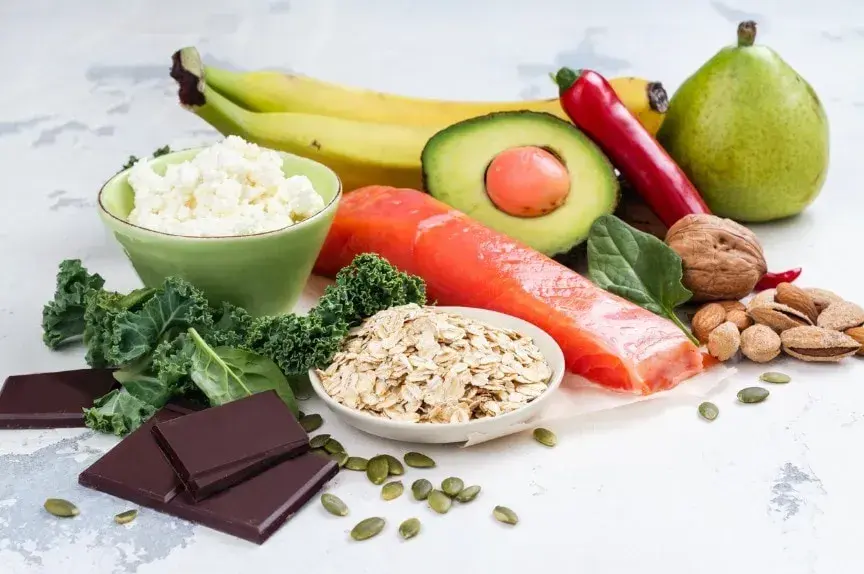
/assets/images/provider/photos/2579655.jpg)
Have you tried to lose weight in the past, only to become confused and frustrated by all the weight-loss tips out there? There’s a reason that so much weight-loss advice seems to be contradictory: Not everyone responds to different foods and exercises the same way. Your health, and the likelihood of your to body to hang on to excess weight, is largely influenced by your unique genetic makeup.
That said, there are some tried-and-true, evidence-based weight-loss tips that can help everyone shed excess body weight. Spoiler alert: they’re all about living an overall healthier lifestyle. They’ll also help you heal underlying health issues like chronic inflammation, which often make weight loss difficult.
Whether you’re kickstarting a new diet or trying to get past a plateau, these three weight-loss tips will help.
1. Eliminate sugar and high-carbohydrate foods
We know that sugary foods or foods with a lot of carbohydrates tend to have a lot of calories. But for weight loss, there’s yet another reason you should cut sugars and starches: they actually make you hungrier.
A study in the journal Obesity found that eating a lower-carb diet controls hunger better than a low-fat one. Another study in the journal Appetite found that eating a higher-carb breakfast led to more hunger later than eating a higher-fat breakfast with fewer carbs.
This doesn’t mean you should start eating a diet rich in hamburgers or other unhealthy meats. What it does mean is you can eliminate foods that have a high amount of carbs that also offer little to no health benefit. These foods will make you hungrier and won’t help you reach your weight-loss goal. Some examples of these foods include:
- Sugary, processed foods
- White breads and pastas
- Bagels
- White rice and rice cakes
- Juices and sweet drinks
- Sweetened yogurt
In addition, you should also limit the amount of higher-carb, but healthy, foods you eat. This is because the carbs will still turn on your hunger signals and could lead to diet failure. Some higher-carb and higher-sugar foods that you may want to limit include:
- Corn and peas
- Bananas
- Carrots
- Potatoes
- Grapes
- Melon
While it’s true that these foods offer nutrients, you should focus on lower-carb fruits and veggies while you’re trying to lose weight to help control hunger. Leafy greens, broccoli, cauliflower, asparagus, bell peppers, zucchini, and berries are all great options.
An added bonus of eating no processed sugar and fewer carbs (even from healthy foods) is that it may encourage your body to start burning stored fat as fuel. When the body can’t draw from sugars for its energy, it turns to its energy stores: body fat. This can help you lose weight even faster.
2. Get enough protein, healthy fat, and fiber
You’re cutting back on carbs to control hunger and burn fat — but low-carb is just one piece of the equation. You’ll need other important nutrients in your foods to keep your energy levels and motivation at its peak as you work toward your goal weight and better health.
Protein, healthy fats, and fiber are essential to a healthy eating plan and weight loss. When planning your meal or snacks, make sure you are including at least one (and preferably two) of these components.
Protein: aim for moderate amounts
It’s important not to go overboard with protein. The human body only needs 46-56 grams of protein per day, which is easily covered in just one chicken breast. While some diets tout the benefits of eating excessive amounts of protein, a moderate approach is better for your health. In fact, there is evidence that suggests that eating high amounts of animal protein in particular leads to a shorter life span.
Good protein sources include:
- Lean meats such as grass-fed beef and poultry
- Low-mercury fish such as salmon, Alaska pollock, and herring
- Nuts and seeds without added salt or sugar
- Eggs
- Lentils
- Beans
- Quinoa
- Some vegetables, including broccoli and asparagus
Reap the benefits of fiber
Fiber is important for controlling hunger and keeping your digestive system healthy. But, you need to keep a few things in mind when eating fiber:
- Increase your amount gradually. Too much fiber at once will lead to gas and stomach discomfort.
- Drink plenty of water to help fiber make its way through the digestive tract. Too much fiber without water can lead to excess gas and constipation.
Some good high fiber, low-carb foods include:
- Broccoli and other cruciferous vegetables
- Legumes like lentils (which also have protein)
- Asparagus
- Mushrooms
- Bell peppers
- Leafy greens
- Apples
Know which fats are good for you
The term “healthy fats” gets a lot of attention, but which fats will help you lose weight?
Monounsaturated fats and omega-3 polyunsaturated fats are going to give you more energy and help you feel less hungry while boosting heart health. Monounsaturated and omega-3 fats are found in foods like:
- Avocados
- Fatty fish like salmon
- Olive oil
- Nuts and seeds
- Eggs that are high in omega-3
Conversely, unhealthy fats such as trans fats have been shown to increase belly fat. Trans fats are the “partially hydrogenated” oils found in some processed foods. Read the ingredients in foods you eat, because even if it says 0 grams of trans fats per serving, it may still contain trace amounts of hydrogenated oils. And, no amount of trans fats is considered safe. Processed foods aren’t a necessary part of any healthy diet and won’t help you lose weight.
Finally, beware of getting too many omega-6 polyunsaturated fats from foods like corn oil and soybean oil. Most people get too much omega-6, and there’s evidence to suggest that it contributes to inflammation in the body.
3. Work your muscles
A possible side effect of cutting calories is that the body’s metabolism may slow down as you lose pounds. Combat this by getting plenty of exercise, which helps keep the metabolism burning at a higher rate.
Resistance training, such as weight lifting, push ups, and other strength exercises, will build muscle, which can give you a toned appearance and help you burn more calories, even while resting. If you’re new to weight lifting or resistance exercises, don’t be afraid to ask a trainer at the gym. You can also use online instructional videos to guide you through.
Learn how to cut calories without hunger
It’s easy to get overwhelmed by all the diets out there. Set yourself up for success by finding out what type of diet will work with your body, not against it. At Garcia Weight Loss and Wellness Centers, we will customize a diet plan and wellness program according to your unique needs. Contact us today for your no-cost consultation.



